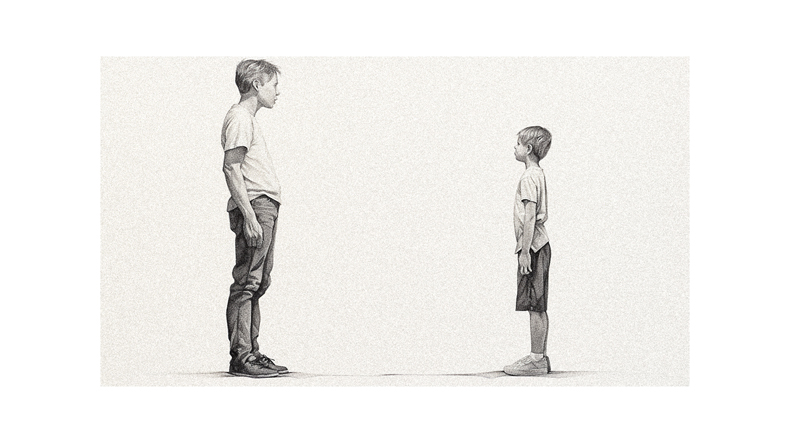Have you ever tried drawing a figure and ended up with a cartoonish version that looked more like an alien than a human? If so, don’t fret! It’s all about mastering the art of anatomical proportions.
This article will explore how proportions change as humans grow from cute little cherubs into towering adults. We’ll explore why children have proportionally larger heads and smaller bodies than adults and how puberty throws another spanner in the works by reshaping our bodies. We’ll also touch on how aging can trick us, subtly tweaking our features over time.
From newborn characteristics to the aging process – it’s incredible how much our bodies transform throughout our lives! So buckle up – you’re about to embark on an exciting journey through life… in proportions!
What is it?
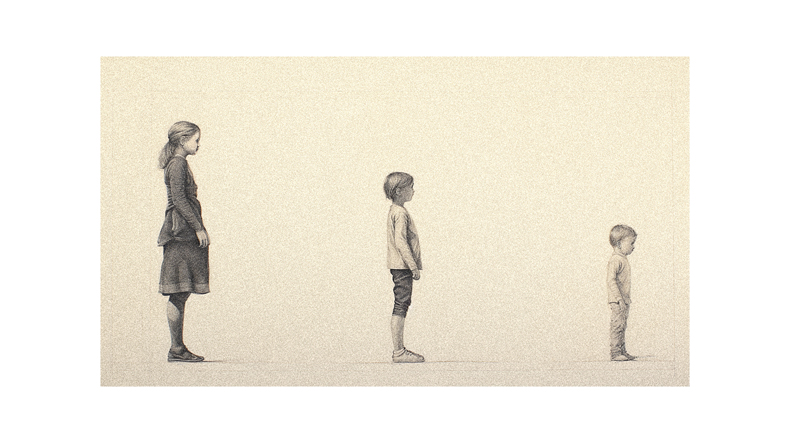
Have you ever wondered how to perfectly capture the difference in proportions between a child’s and an adult’s body when drawing? You’re in the right place! Understanding anatomical proportions is crucial for creating realistic figures.
For adults, the body is about eight times the height of the head. In contrast, a child’s body can be only four to five times their head height. The head size also plays a key role in determining body part sizes like arms, legs, and torso.
But remember, these are just guidelines; individual variations exist, and capturing these can add authenticity to your drawings. So, next time you pick up your sketch pad, keep these tips handy to nail those proportions!
Causes and Mechanism
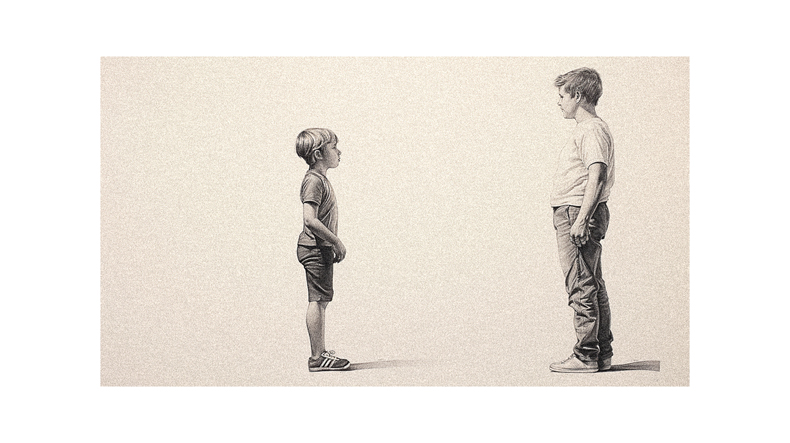
Let’s face it: as we journey from the clumsy toddling stage of our life to the full bloom of adulthood, we all have to deal with some weird and wacky changes in our bodies! Our proportions shift dramatically. A baby’s head is one-quarter of its total length, while an adult’s is just one-eighth. During puberty, boys’ shoulders broaden, and girls develop hips, creating that characteristic hourglass shape.
Yet it’s not just about growth; aging also affects our body proportions. Muscle mass can decrease as we hit middle age while fat accumulation increases. In old age, the battle with gravity begins! We may shrink a bit as our bones lose density over time.
It’s a wild ride from start to finish!
Common Changes
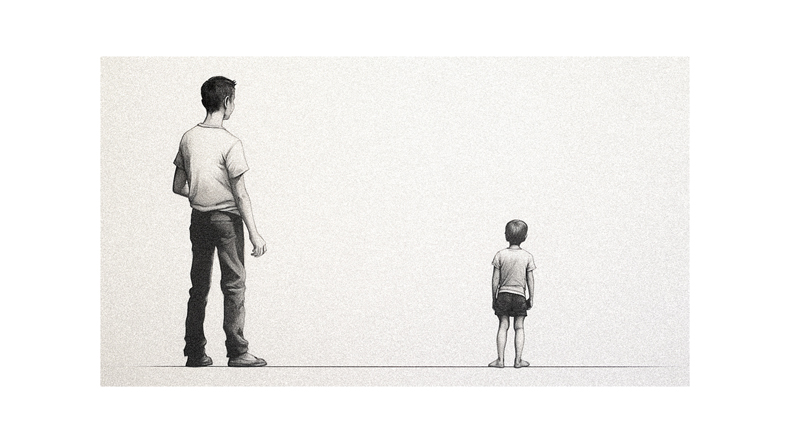
Imagine a journey where your body morphs and transforms as you age, from the chubby cheeks of infancy to the wrinkles of old age.
As a baby, I had short legs and an elongated head. As I grew into a toddler, I slimmed down but still maintained my clumsiness.
Puberty hit during adolescence and brought about significant changes, such as broader shoulders for boys and breast development for girls.
Adulthood saw growth stop with my body fully matured; grey hair began appearing in my thirties, while muscle density decreased in middle age.
Old age brought about thinning hair, more visible veins, blemishes, and permanent lines on my face due to loss of skin elasticity.
Aging is truly fascinating as it’s a testament to life’s ongoing transformation.
Stages of Life
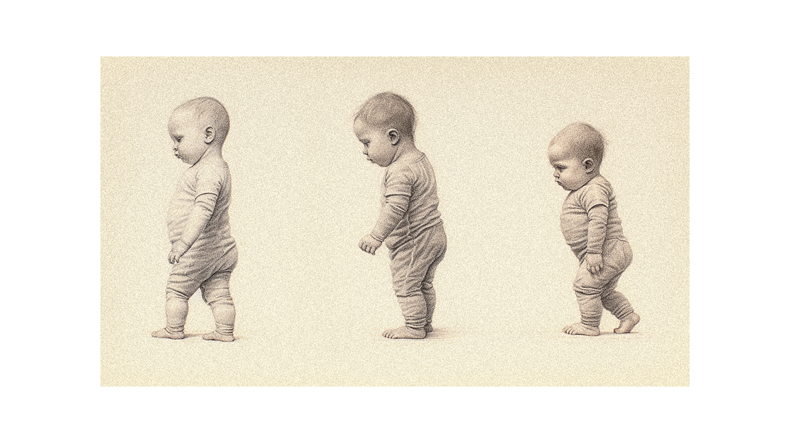
From the first cry out of the womb to taking our last breath, we constantly evolve at each stage of life.
As newborns, we have short legs, an elongated head, and no neck or chin.
As toddlers, we slim down but remain a little clumsy.
When we reach adolescence, our bodies transform with puberty; boys’ shoulders broaden, and girls develop breasts.
Entering adulthood is when growth stops, and we achieve maturity with fully developed muscles.
But age doesn’t stop there – it continues to change us.
In middle age, muscle density decreases while fat accumulation increases.
Old age brings more wrinkles and thinning hair, and grey strands appear as tell-tale signs of aging.
Each phase has unique anatomical proportions that reflect the passage of time in our figures.
Newborn Features
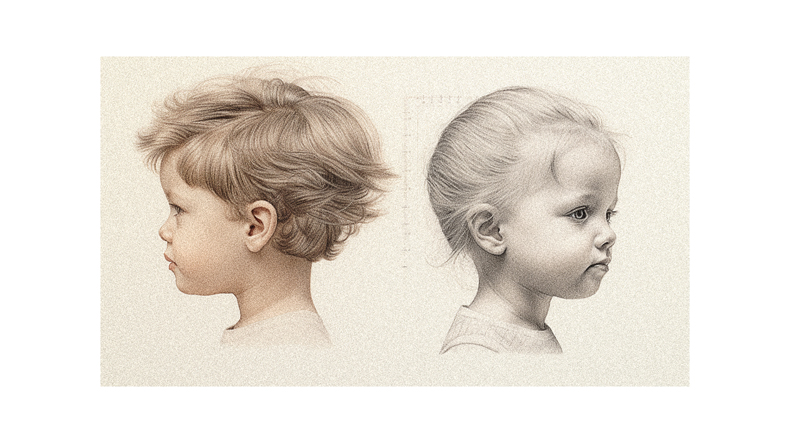
As a newborn, you’re just a bundle of joy with stubby legs and an elongated head that’s too big for your tiny body. Your ears are as flat as pancakes, and you don’t have a neck or chin yet. You’re mostly all face at this stage – wide-eyed and filled with wonder.
The rest of your proportions are off, too. Your limbs are short and pudgy, perfect for clutching onto things but not quite ready for much else. You can’t support your head yet, so it bobbles endearingly when lifted.
Despite these odd proportions, there’s something beautifully delicate about how every feature seems designed to fit perfectly in the palm of an adult hand. It’s a magical time when everything about you is softness and potential.
Toddler Features
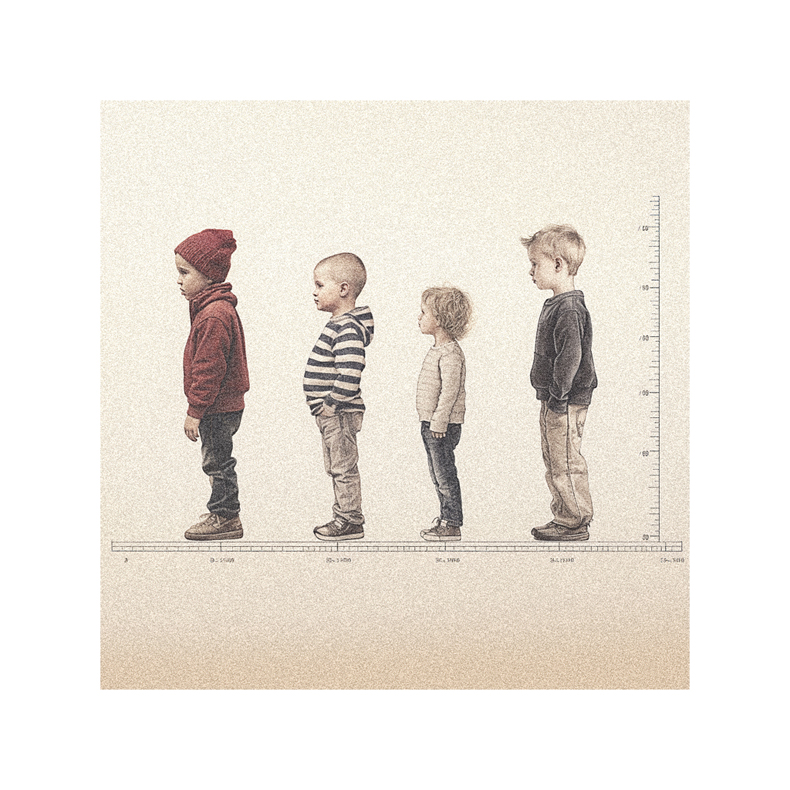
After observing the unique features of newborns, I’ve noticed some distinctive changes as they grow into toddlers. First, these little ones slim down quite a bit but retain their adorable clumsiness.
Their hair thickens, and those baby curls might begin to show. A noticeable development is in their mouth – it becomes pouty, making their babbling even more endearing.
As for their bodies, toddlers have short legs compared to the rest of their body, but that doesn’t slow them down one bit! They’re always on the move, exploring everything around them.
Toddlerhood is such an exciting stage; it’s incredible how much change occurs just a few years after birth! We’ll keep tracking these transformations as we move on to older children next time.
Adolescent Changes
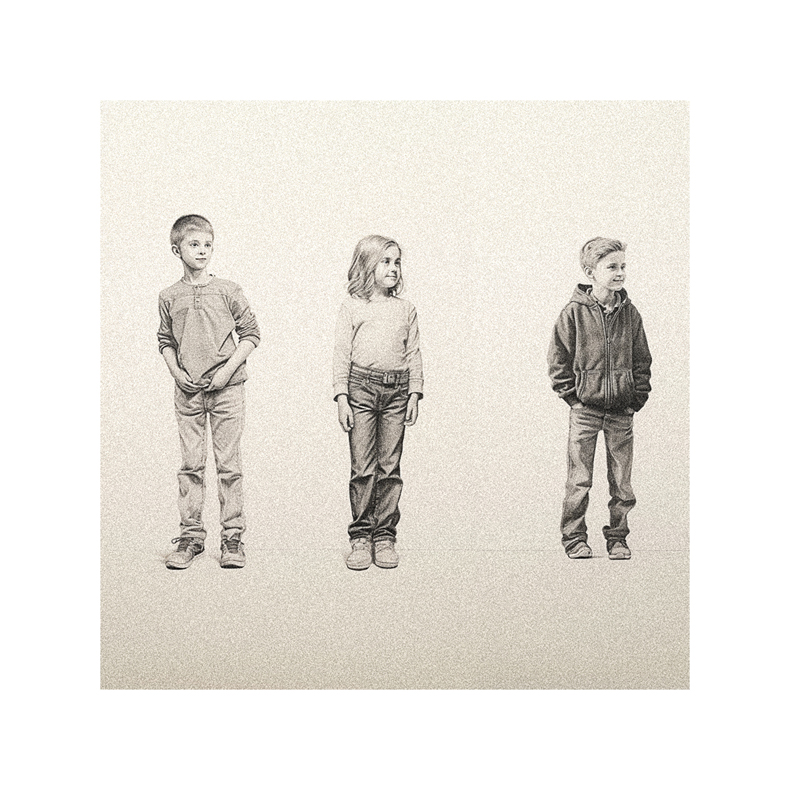
You’ll notice that as youngsters transition into adolescence, their bodies undergo significant changes. This is when puberty kicks in, and you can start seeing the differences between boys and girls.
Observing these transformations is fascinating as they shape the adult human form we’re so familiar with. Keep an eye out for these changes when drawing adolescents – it’ll add a touch of realism to your art!
Adulthood Features
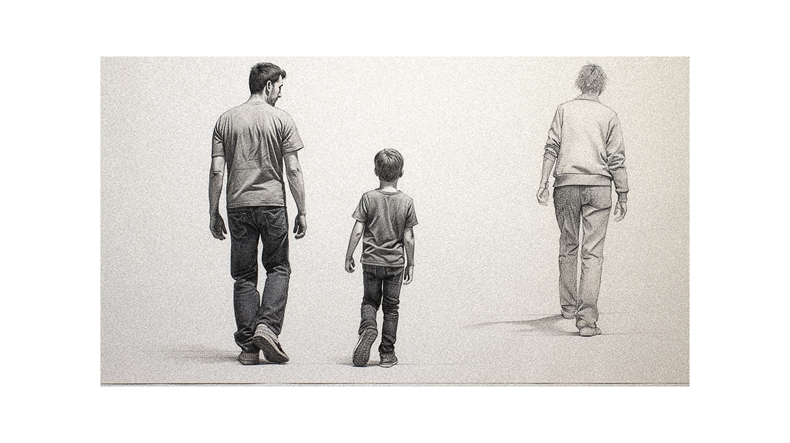
When we hit our prime in adulthood, it’s a new ballgame in drawing. The body achieves maturity with fully developed muscles, and women boast full breasts. Even grey hair can appear as early as your late twenties or thirties!
Eyelids become more visible, toning down that youthful gaze a notch. Our eyes appear slightly smaller, and the nose develops a chiseled line. Male faces sport strong squared jaws, sometimes surrounded by a shadow if they’re dark-haired.
As for females? Our lips are fleshy and may look redder due to cosmetics. Remember that ear size remains constant from here on out – the distance between the top of your eyes to the tip of your nose is a good measure!
Middle Age Changes
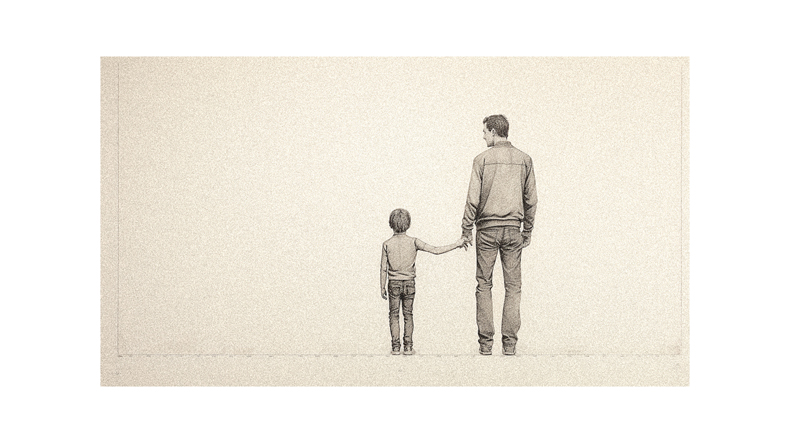
As I bid goodbye to the peak of adulthood, I noticed more changes in my body. The firmness of my muscles gives way to a softer density.
Wrinkles make their debut on elbows and kneecaps as fat accumulation increases. Heavier eyelids obscure my gaze while crow’s feet march at the corners of my eyes. A downward fold shows up at the corners of my mouth, and lines may appear at the root of my nose. My hairline might also start receding, with strands turning salt-and-pepper-like.
As a woman, menopause hits around this stage, too, marking another significant physical transition in life’s journey. But no worries! Every wrinkle carries wisdom, right?
Old Age Features
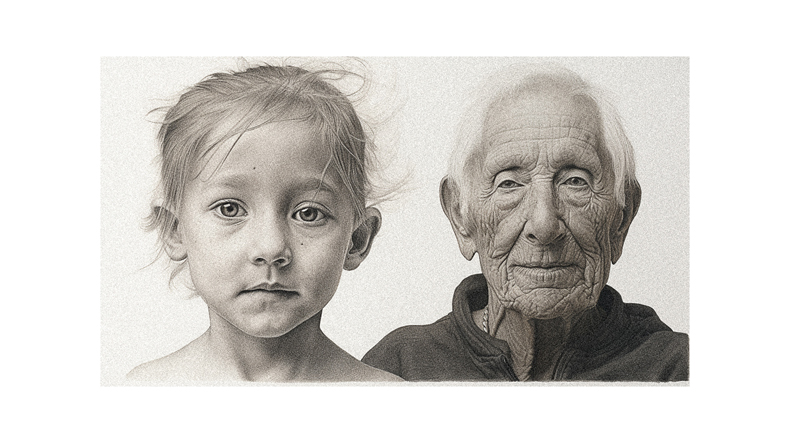
It’s a fact that as I stride into the golden years, my body goes through more transformations.
Did you know that around 90% of people over 65 notice changes in their eyesight? It’s as if they’re seeing the world through a new lens. The color intensity of the iris dulls, and eyes sink back, making the orbits more visible under thinning skin.
My hair turns grey and thins out while my skin loses its elasticity, resulting in a less firm jawline. In men, the hairline recedes considerably or disappears altogether! And don’t get me started on wrinkles – they become permanent fixtures on my face, with worry lines, frown lines, and smile lines keeping each other company.
Age sure has its way of leaving an indelible mark on us!
Facial Changes
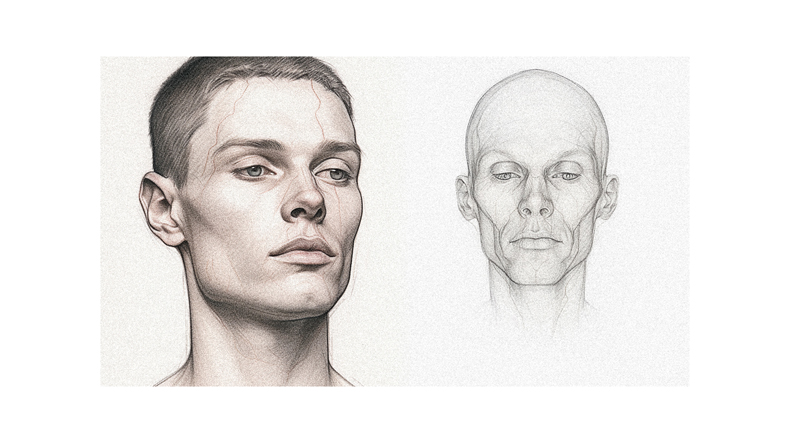
Believe it or not, age doesn’t just add character to your personality, it sculpts your face in fascinating ways, too! As I’ve grown older, I’ve noticed several changes that are characteristic of the aging process. Here’s a quick rundown:
- Eyes: They sink back a little, giving my eye sockets more prominence. Also, my upper eyelids have started drooping slightly.
- Skin: It’s losing elasticity and firming up less around my jawline. Plus, those pesky crow’s feet have become long and abundant.
- Nose: The tip has begun to droop due to loss of cartilage.
- Mouth: My lips are thinning out, and vertical lines are appearing.
While these signs of aging might seem discouraging at first, they’re just new lines in the story of our lives!
Hair Changes
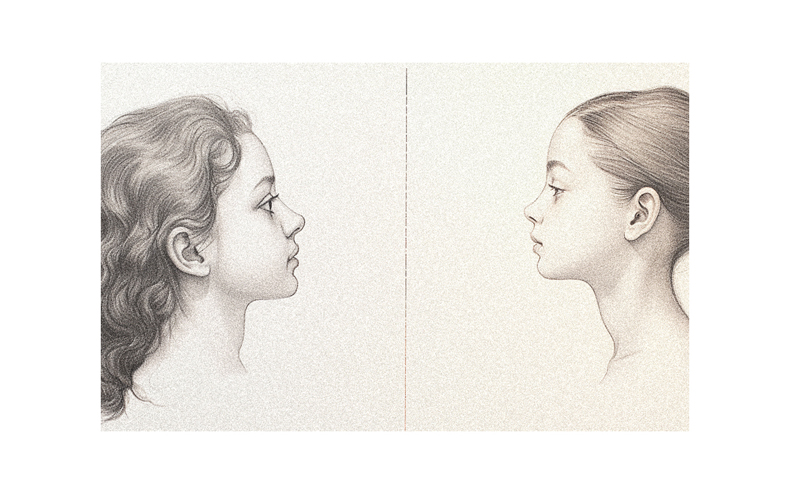
Like your face, your hair undergoes quite a transformation as you age.
As a child, my hair was usually thick and vibrant. However, as I entered adolescence, I noticed it started to change in texture and volume.
In my twenties and thirties, the first signs of grey strands appeared. It’s interesting how the timing of greying can vary significantly from person to person.
Body Changes
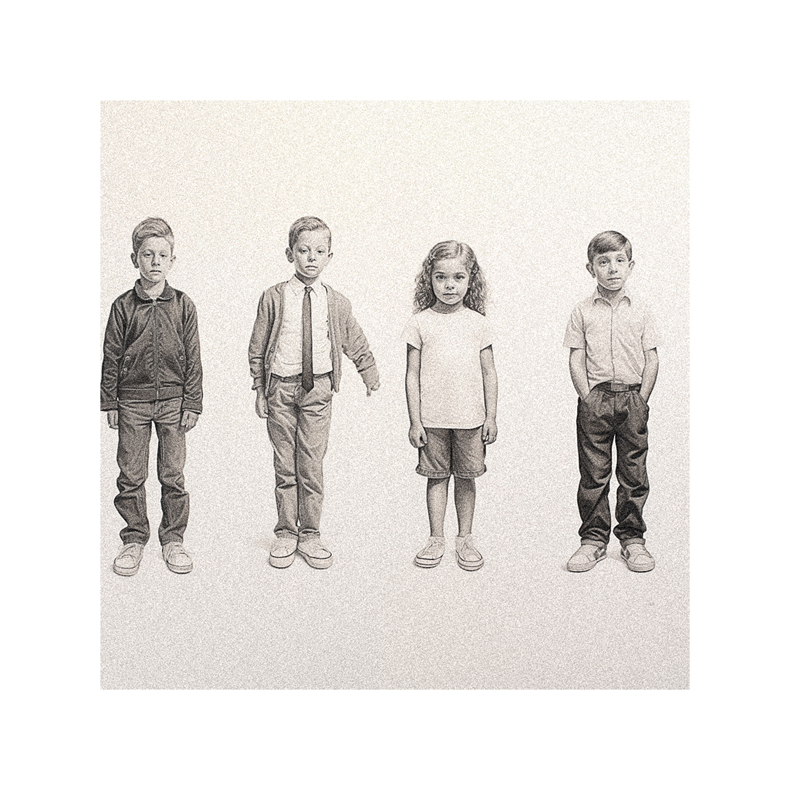
Having detailed the changes in hair as we age, let’s now focus on how the body transforms.
As a baby, our bodies look very different from when we were adults. Our head is proportionally larger, and our legs are significantly shorter.
As we grow into toddlers and then children, our proportions change; legs lengthen, and heads don’t seem oversized.
During adolescence, boys’ shoulders broaden while girls’ hips widen – signs of puberty kicking in.
In adulthood, growth halts, and the body matures fully with well-developed muscles.
Then comes middle age, where muscle density decreases, and fat accumulates more easily.
Old age brings further changes, such as bones losing density and weight gain being redistributed to the abdominal area.
Bone Density Loss
As you age, your bones lose their density, making you shorter and more prone to fractures. This process is a natural part of aging and can impact how your body looks and feels.
You might find that your posture changes due to this bone loss or that you’re not as tall as you used to be. Some people even notice changes in their face, like the nose tip drooping due to loss of cartilage or cheeks appearing hollow because skin adheres closer to the bone.
It’s all part of the aging process, but there are ways I can help delay these effects with exercises aimed at strengthening my bones and maintaining good posture.
Weight Redistribution
In later stages of life, weight gain is not uncommon to shift towards the abdominal area, causing the once-defined waistline to disappear gradually. This can be particularly noticeable in women post-menopause as hormonal changes affect fat distribution.
- As we age, our bodies naturally lose muscle mass and gain fat. This process is known as sarcopenia.
- The body’s metabolic rate also slows down with age, contributing to increased body fat.
- Hormonal changes during menopause cause women to store more fat around their abdomen than their hips and thighs.
- Changes in lifestyle, such as decreased physical activity and unhealthy eating habits, are also factors that contribute to this weight redistribution.
It’s these subtle shifts in our bodies that emphasize the aging process.
Skin Changes
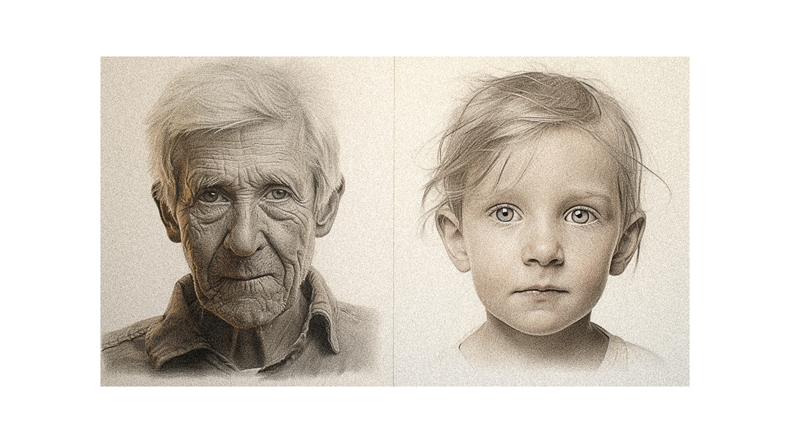
Believe it or not, our skin goes through some drastic changes as we age – it’s like a never-ending roller coaster ride! When we’re young, our skin is plump and elastic. It’s firm to the touch and has a natural glow. But as we grow older, things start to change.
Our skin begins to thin out and loses its elasticity. This means wrinkles can form more easily, and our skin starts sagging in places it didn’t before. You might notice veins, blemishes, and age spots becoming more apparent, too – these are all signs of aging skin.
Our skin becomes even thinner in old age and may appear translucent in some areas. Even the texture changes; instead of being smooth, it may feel rough or dry to the touch.
Eye Changes
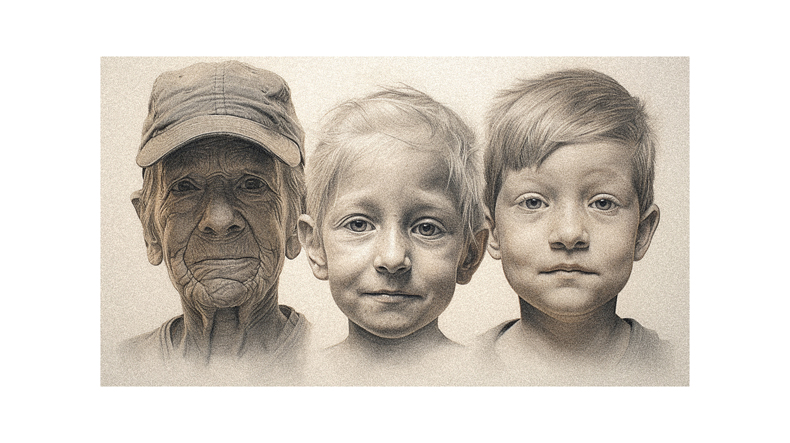
Did you know that your eyes tell a fascinating tale of the aging process? As we age, our eyes undergo noticeable changes.
In childhood, our eyes appear more prominent than the rest of our faces due to their proportionally smaller facial features. However, as we grow into adulthood, our eyelids become more visible, creating a toned-down gaze. This makes the eyes seem slightly smaller.
Entering middle age sees heavier eyelids, crow’s feet beginning to show up at the corners of the eye, and pockets appearing under them.
In old age, loss of elasticity in the skin causes sagging, which causes an upper eyelid to sag, resulting in a triangular eye shape. The vibrant iris, too, becomes less intense with time.
Lip Changes
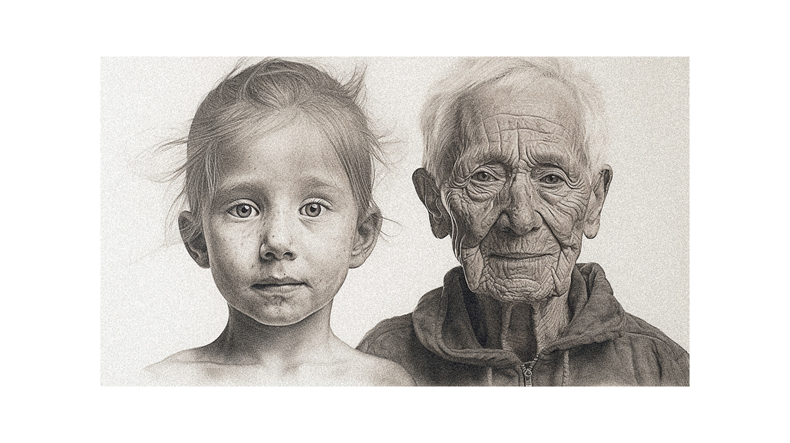
Just like a rose losing its velvety charm over time, your lips, too go through their aging journey.
As a kid, full and luscious lips are the norm. They’re youthful vibrant, and often sport a natural rosy tint.
They might become more defined and shapely in adulthood thanks to collagen and facial muscles maturing. Cosmetics may be used to enhance this new allure.
With middle age knocking at the door, you might notice them thinning out slightly or developing fine lines around the edges.
By old age, these once plush pillows of expression have dwindled – thinner with less color – echoing the passage of time.
Each stage is beautiful as it reflects an individual’s unique story etched on their face.
Overall Aging Process
It’s fascinating to see how the human body gracefully evolves from birth through age, each stage revealing its unique characteristics and charm.
With their short legs and elongated heads, newborns transform into toddlers who begin to slim down but retain a certain clumsiness.
Adolescence introduces significant changes in both males and females as they undergo puberty.
Adulthood brings stability; growth stops, muscles mature, and signs of aging subtly emerge.
Middle age presents its changes: decreased muscle density, wrinkles around elbows and kneecaps, and heavier eyelids.
Old age intensifies these transformations further – grey hair thins out, and skin loses elasticity, leading to a less firm jawline and more visible veins or blemishes.
It’s genuinely remarkable witnessing this lifelong journey unfold.
Follow us on Pinterest for more tips, tutorials, and artist reviews!

